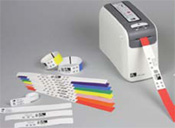How A Consultative Approach To Healthcare IT Led To A $1.3 Million Sale
By Jay McCall, Business Solutions magazine
A healthcare IT solutions provider’s up-front consultation helped it beat out three competitors and land an EMR (electronic medical records) install with a 600-bed hospital.
Winola Lake is a technology solutions provider that’s been focused exclusively on the healthcare space since its inception three years ago, and at the time of our interview was on pace to reach $9 million in sales revenue by the end of 2012. Led by former cofounder of wireless integrator InfoLogix, Rick Hodge, the company also boasts a 75% close rate when brought into new business opportunities. Hodge shared with me a key component to his success that other IT solutions providers would be wise to heed.
 “A lot of our competitors initiate prospect discussions focused on IT products,” says Hodge. “We start with their short- and long-term business plans and end with IT products.” Getting this first step right makes all the difference, according to Hodge. One recent customer win that illustrates Hodge’s point is Reading Hospital, a 600-bed short-term acute care hospital based in central Pennsylvania. Like many healthcare providers, the hospital wanted to comply with the meaningful use standards defined by the Centers for Medicare and Medicaid Services (CMS) Incentive Programs. “These standards govern the use of electronic health records and allow eligible providers and hospitals to earn incentive payments by meeting specific criteria,” says Hodge. “The downside, if hospitals don’t comply with meaningful use rules, is that their Medicare and Medicaid reimbursements can be reduced by as much as 5%, which can be millions of dollars a year for some hospitals.”
“A lot of our competitors initiate prospect discussions focused on IT products,” says Hodge. “We start with their short- and long-term business plans and end with IT products.” Getting this first step right makes all the difference, according to Hodge. One recent customer win that illustrates Hodge’s point is Reading Hospital, a 600-bed short-term acute care hospital based in central Pennsylvania. Like many healthcare providers, the hospital wanted to comply with the meaningful use standards defined by the Centers for Medicare and Medicaid Services (CMS) Incentive Programs. “These standards govern the use of electronic health records and allow eligible providers and hospitals to earn incentive payments by meeting specific criteria,” says Hodge. “The downside, if hospitals don’t comply with meaningful use rules, is that their Medicare and Medicaid reimbursements can be reduced by as much as 5%, which can be millions of dollars a year for some hospitals.”
Forgoing IT Consultation Fees Pays Off
Reading Hospital knew that part of that process would entail converting its paper documentation process over to digital patient records, so it reached out to a few EMR resellers to start comparing quotes. The Winola Lake team met with the hospital’s project team to gain a deeper understanding of what the hospital was trying to accomplish. During this two-week period, Winola Lake helped the hospital discover a couple of ways it could improve its patient care processes beyond just digitizing patient documents. “Workflow is a key area that gets overlooked when users focus too much on technology rather than how to deploy the technology to gain maximum benefit and efficiencies,” says Hodge. “For example, even in EMR environments, you can find nurses scanning patient medications outside a patient’s room instead of at the patient’s bedside and administering medications to the wrong patient because the nurse walks into the wrong room, or maybe there are two patients in a room and the nurse mixes up the patients.”
The solution Winola Lake proposed included Zebra patient wristbands outfitted with bar code labels, mobile bar code readers, and in-room computers, which it sourced through BlueStar. “The solution authorizes that a particular medicine can be dispensed only after the patient, drug type, drug dosage, and time of dosage have been confirmed,” says Hodge. Not only was Winola Lake able to show the hospital administrators how they could reduce patient medication errors and comply with meaningful use regulations, it also shared its best practices for printing bar code labels, including how to scan the bar codes and how much data should be included in the bar code compared to being humanreadable data. “We would normally charge a few thousand dollars to have one of our healthcare consultants spend this kind of time with a prospect,” says Hodge. “Because of our history with this client and because of how receptive they were to our advice, we waived our consulting fees.”
Winola Lake’s decision paid off. Within a couple of months of its first engagement with the hospital, it was selected as the EMR provider. Over an eight-month period, Winola Lake sold the hospital a $1.3 million EMR solution comprising 400 in-room solutions (including a small form factor computer, 19-inch flat screen, and bar code scanner), 50 Rubbermaid mobile carts, a medication verification solution that includes Zebra bar code label printers and patient wristbands, and devices to enable their CPOE (computerized physician order entry) system. In addition to rolling out hardware and software, the deal included training, help desk services, IT support, and ongoing supplies of bar code wristbands. According to Hodge, not only is Winola Lake able to leverage this big win to help his company with other similar healthcare opportunities, but he anticipates additional opportunities down the road with Reading Hospital, too.
